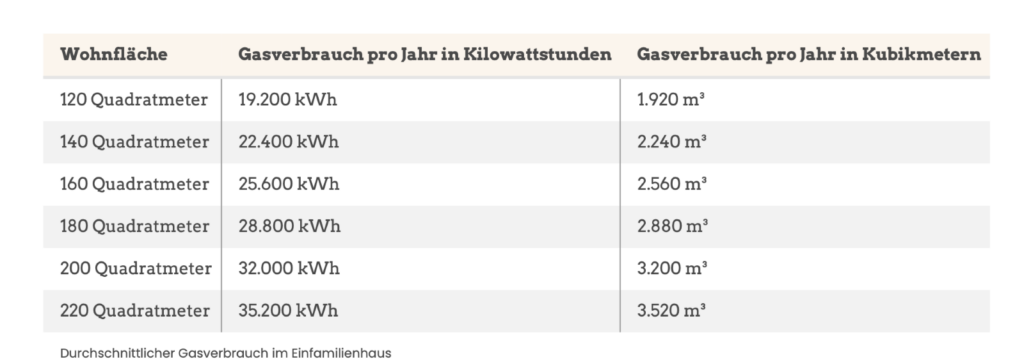Wir geben offen zu, die Claudia Kemfert verblüfft wieder einmal, allerdings nicht positiv. In einem Interview mit T-Online schimpft sie über den Verkehrsminister Wissing und dessen E-Fuel-Pläne. Sie trommelt aber auch kräftig für Wärmepumpen und dabei stellt sie eine interessante Rechnung auf, um Gaskunden zu schocken.
t-online: Die Zehn-Jahres-Rechnung nützt aber dem Hauseigentümer nicht, der im kommenden Jahr nicht weiß, wie er die fünfstellige Summe für seinen Heizungsaustausch aufbringen soll.
Claudia Kemfert: Es gibt bereits Förderprogramme, auch mit Härtefallregelungen. Die müssen ausgebaut werden und sicher auch nach Einkommen gestaffelt werden. Als Eigentümer eines Einfamilienhauses müssen Sie aktuell nicht selten einem Gasanbieter bis zu 9.000 Euro für ein Jahr nachzahlen. Das ist schon die Hälfte der Wärmepumpen-Investition. Die Zeit der Gas- und Ölheizungen ist abgelaufen.”
Moment mal, 9.000 Euro Nachzahlung? Wir wissen nicht, ob Claudia Kemfert weiß, wie Gasrechnungen bezahlt werden. In der Regel wird ein Vorjahresverbrauch genommen, den der Versorger auf 12 Monatsraten aufteilt und sich per Abschlag monatlich bezahlen lässt. Am Ende einer Abrechnungsperiode werden dann die Abschläge mit dem tatsächlichen Verbrauch gegengerechnet. Wer mehr verbraucht zahlt mehr oder wenn der Preis gestiegen sein sollte. Üblich sind aber Jahresverträge oder sogar 2 und mehr Jahre. Die Seite Wohnglück gibt uns einen Überblick, wo hoch ca. die Verbräuche verschiedener Hausgrößen sind. Das ist mit Unsicherheiten verbunden, es ist daher nur ein Richtwert.

(Abbildung: Screenshot Wohnglück.de)
Gehen wir weiter davon aus, dass der durchschnittliche Preis für eine Kilowattstunden von ehemals ca. 6 Cent auf 12 Cent gestiegen ist im letzten Jahr. Dann kommt das 220 Quadratmeter-Haus auf ca. 4.200 Euro Gaskosten im Jahr. Rechnen wir noch großzügig eine Grundgebühr drauf, dann kommt man auf ca. 4.500 Euro insgesamt. Bei der Kemfertschen Rechnung ist aber allein die Nachzahlung 9.000 Euro, das wären auf die Kilowattstunden heruntergebrochen 75.000 Kilowattstunden zusätzlicher! Verbrauch. Wie soll das gehen? Dazu müsste man schon monatelang im DDR-Stil durchheizen und per geöffnetem Fenster die Temperatur regeln. Oder haben neuerdings alle Einfamilienhäuser beheizte Außenpools?
Kann es sein, dass die Expertin gar nicht weiß, was sie da im Interview gesagt hat? Oder kann es sein, dass sie auf diesem Wege einem Gaskunden eine Wärmepumpe schmackhaft machen wollte? Wenn ja, dann hat sie möglicherweise vergessen, dass ein Gaskunde sich die Hosen nicht mit der Kneifzange anzieht und seinen Gasverbrauch und seine Kosten kennt. So bleibt es eine eigenartig weltfremde Aussage und alles andere als Expertenwissen. Mit den Zahlen scheint sie es ja nicht wirklich zu haben.
+++
“Why climate ‘doomers’ are replacing climate ‘deniers’”
So lautet die Überschrift eines Artikels in der Washington Post. Die Untergangs-Rufer haben also die Leugner ersetzt. IPCC-Autor Zeke Hausfather wird ziemlich genervt zitiert.
““It’s fair to say that recently many of us climate scientists have spent more time arguing with the doomers than with the deniers,” said Zeke Hausfather, a contributing author to the U.N. Intergovernmental Panel on Climate Change and climate research lead at the payments company Stripe.
There are different flavors of doomers. Some are middle-aged and have been influenced by outspoken scientists — like retired ecologist Guy McPherson — who claim that human extinction, or at least the breakdown of society, is imminent. (“I can’t imagine that there will be a human left on the Earth in 10 years,” McPherson has said.) These doomers drift toward conspiracy theories, sometimes claiming that the Intergovernmental Panel on Climate Change is downplaying the seriousness of the issue.”
Interessant ist sicherlich auch, wie die Deadlines in die Welt kamen und wer sie promotet hat, es waren die Medien.
“The report, which focused on how an increase of 1.5 degrees Celsius from preindustrial levels might compare to 2 degrees Celsius, included grim predictions like the death of the world’s coral reefs and ice-free summers in the Arctic. But a central message many took from the report — that there were only 12 years left to save the planet — wasn’t even in the report. It came from a Guardian headline.
In three of the four pathways the report charted for limiting warming to 1.5C, the world would have to cut carbon dioxide emissions 40 to 60 percent by 2030. “We have 12 years to limit climate catastrophe,” the Guardian reported, and other outlets soon followed. The phrase soon became an activist rallying cry.”
+++
Fritz Vahrenholt hielt beim FWP – Forum Wissenschaft, Wirtschaft & Politik einen Vortrag mit dem Titel “ Die große Energiekrise und wie wir sie bewältigen können.” Der Vertrag ist ca. 75 Minuten lang und kann bei YouTube angesehen werden.
+++
Haben chinesische Forscher einen Durchbruch bei der Wasserstoff-Gewinnung aus Seewasser erreicht? Der Blog China Hydrogen Bulletin berichtet darüber:
“The problems of side reactions and corrosion caused by complex components in seawater have always been difficult to solve by direct electrolytic hydrogen production in seawater. By combining molecular diffusion, interfacial phase equilibrium and other physical and mechanical processes with electrochemical reactions, team of professor Xie Heping from Shenzhen University/Sichuan University pioneered a new principle and technology for direct electrolytic hydrogen production of seawater, established a theoretical method for direct electrolytic hydrogen production of seawater with gas-liquid interface phase transition.
The electrochemical reaction doesn’t need extra energy consumption and the dynamic self-regulation and stabilization of seawater direct electrolytic hydrogen production can be realized in collaboration with seawater migration. The 386 L/hr H2 prototype electrolyzer stably produced hydrogen in real seawater for more than 3200 hours, with Faraday efficiency of nearly 100% and electrolytic energy consumption of about 5.0kwh/Nm3.”
+++
Lag es am unglücklichen Timing, weil kurz vor dem Volksentscheid über ein klimaneutrales Berlin im Jahr 2030 die Pläne der Bundesregierung zum Thema Wärmeversorgung herauskamen? Wie auch immer, der Entscheid hat die erforderliche Mehrheit deutlich verpasst, wie die Tagesschau berichtet.
“Der Volksentscheid für ehrgeizigere Klimaziele in Berlin ist gescheitert. Die nötige Mindestzahl von „Ja“-Stimmen sei nicht mehr zu erreichen, teilte die Landeswahlleitung kurz vor Abschluss der Auszählung mit. Nach Auszählung von etwa 98 Prozent der Stimmen lagen die Befürworter demnach zwar knapp vor den Gegnern einer solchen Gesetzesänderung. Damit wurde indes nur eine Voraussetzung für einen erfolgreichen Volksentscheid erfüllt.
Die zweite Voraussetzung, eine Zustimmungsquote (Quorum) von mindestens 25 Prozent aller Wahlberechtigten, wurde indes verfehlt. Kurz vor Ende der Auszählung standen rund 423.000 „Ja“-Stimmen etwa 405.000 „Nein“-Stimmen gegenüber. Das Quorum für einen erfolgreichen Volksentscheid lag bei etwa 608.000 „Ja“-Stimmen.”
Vielleicht haben auch einige Wähler das Kleingedruckte gelesen, wir berichteten kürzlich. Es ging nämlich nicht nur um das Klima bei der Abstimmung. Die Berliner müssen jetzt mit der Bürde leben, dass sie und nur sie für Extremwetter jeglicher Art in der Zukunft auf der Welt verantwortlich sind. So jedenfalls der enttäuschte ZDF-Meteorologe Özden Terli auf Twitter.

(Abbildung: Screenshot Twitter)
+++
Researchers warn of ‚urgent‘ need to understand impact of wind farms on precious peatlands
Environmental scientists at Nottingham Trent University have, for the first time, mapped the extent of known wind farm infrastructures, such as wind turbines and vehicle tracks, on recognized blanket bogs in Europe.
Blanket bogs—a rare type of peatland commonly found in areas with lots of rain and low temperatures—are typically found on hill summits where wind energy potential is higher, making them attractive sites for wind farm developments.
They have a range of beneficial ecosystem services, improving water quality and water storage and biodiversity. However, a large proportion of blanket bogs are already in an unfavorable condition, according to the EU Habitats Directive reports.
The study, published in Scientific Reports, revealed more than 640 wind turbines on blanket bogs across the European Union and the U.K., as well as more than 250km of vehicle access tracks.
Peatland environments are the Earth’s largest terrestrial carbon store and act as a natural carbon sink when in pristine condition or restored, helping to mitigate climate change. While their habitat covers less than 3% of the planet’s land surface, peatlands represent more than a quarter of all terrestrial carbon.
Blanket bogs have been compromised by anthropogenic pressures such as peat extraction for fuel and horticulture, forestry, overgrazing, drainage, burning for recreational activities, and human infrastructures for centuries.
Wind farm developments are a modern threat to these ecosystems, with their installation on blanket bogs posing particular threats to peatland hydrology, ground level climatic conditions, habitat biodiversity, and carbon storage.
The Nottingham Trent University researchers argue that while the promotion of renewable energy is a priority, establishing wind farms on peatland in pursuit of greener energy might actually be undermining the green energy transition.
The study assessed the extent of wind farm developments on blanket bogs recognized under the EU’s Habitats Directive. This directive ensures the conservation of a wide range of rare, threatened or endemic animal and plant species.
This Directive requires each member state to report the conservation status of this habitat every six years, and when necessary, encourage and implement restoration actions to improve quality and conservation status.
„Our research reports for the first time the current known extent of wind farm developments on blanket bogs across the EU and UK,“ said lead researcher Dr. Guaduneth Chico, a scientist in Nottingham Trent University’s School of Animal, Rural and Environmental Sciences.
He said, „The potential long-term damage to this habitat is still unclear, but evidence supports negative impacts of wind farm developments on this critical habitat. Blanket bogs represent a particularly vulnerable habitat, the study of which should be prioritized with the aim of protecting and restoring by reviewing the national inventories of this habitat across Europe.
„Several unrecognized blanket bogs have also been identified across the EU recently, highlighting the lack of understanding and consequently adequate protection of this important habitat. This study was not able to consider these, and so it is possible the problems we identify are worse than we have been able to consider here. There is an urgent need to assess the impacts of wind farms on peatlands of all types to ensure that efforts to meet energy targets do not jeopardize the environment,“ Dr. Chico added.
In Europe, the most important and extensive blanket bogs are found in the British Isles with some occurrence in Norway, France, Austria, Sweden, Spain and Portugal (Azores Islands).
Paper: Guaduneth Chico et al, The extent of windfarm infrastructures on recognised European blanket bogs, Scientific Reports (2023). DOI: 10.1038/s41598-023-30752-3. www.nature.com/articles/s41598-023-30752-3
